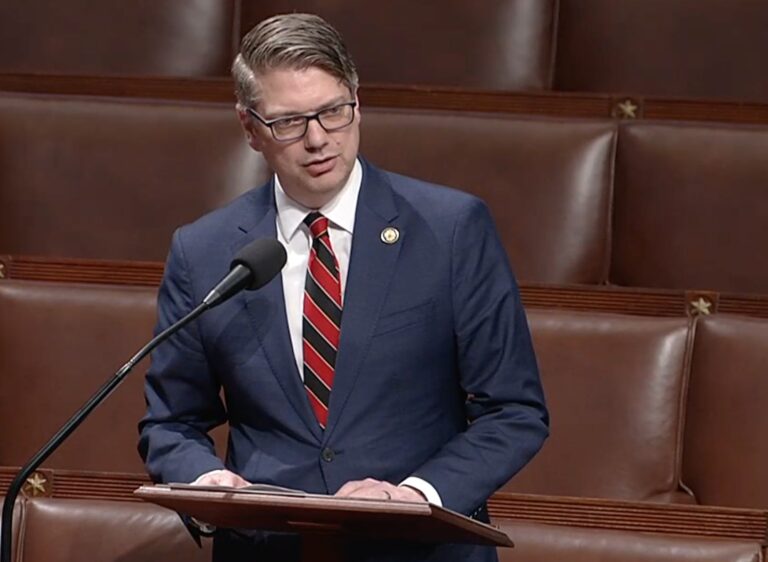By LINDA BOYLE
On April 27, I wrote of the intent of Human and Health Services Secretary Robert F. Kennedy, Jr. to remove harmful synthetic dyes from our food.
One of those synthetic dyes, Red No. 3, was already slated to be removed from our food by 2027-2028. This dye was removed from cosmetics nearly 35 years ago because of its potential cancer risk. It took a long time to state if it isn’t good for our face, it can’t be good for the food we eat.
Secretary Kennedy said he’d be meeting with manufacturers to discuss the implications and how they can start removing the dyes on their own. His goal was for major manufacturers to make the voluntary decision to change, versus a government mandate.
“Today we take a major step to Make America Healthy Again,” Kennedy said. “For too long, our food system has relied on synthetic, petroleum-based dyes that offer no nutritional value and pose unnecessary health risks. We’re removing these dyes and approving safe, natural alternatives — to protect families and support healthier choices.”
Since that announcement, The FDA has approved two dyes and expanded approval of a third, meaning it can now be used in a wider range of food products.
The approved additives include Galdieria extract blue, which is derived from algae; butterfly pea flower extract from the butterfly pea flower; and calcium phosphate, a natural compound containing calcium and phosphorus.
Galdieria extract blue is approved for us in several products including fruit juices, fruit smoothies, candy, chewing gum, breakfast cereals, popsicles and yogurts.
Butterfly pea flower extract had its use expanded to color ready-to-eat cereals, crackers, snack mixes, hard pretzels, plain potato chips, plain corn chips, tortilla chips and multigrain chips.
Calcium phosphate was approved for use in ready-to-eat chicken products, white candy melts, doughnut sugar and sugar for coated candies.
On June 17, the Kraft-Heinz company announced its plan to eliminate artificial dyes from its food by 2027. The company stated only about ten percent of its food needs this adjustment—the other 90% are fine.
It’s hard to say how consumers will react to the new food appearances and the effect on powdered mixes such as Kool-Aid and Jell-O.
For most products, Kraft-Heinz said it can replace artificial colors with natural ones. Some colors, like greens and blues, are harder to re-create naturally. The company is planning to use other colors in their products instead. In products where color isn’t critical, Kraft-Heinz will remove them entirely.
“The vast majority of our products use natural or no colors, and we’ve been on a journey to reduce our use of FD&C colors across the remainder of our portfolio,” said Pedro Navio, Executive Vice President and President, North America for Kraft-Heinz.
Navio said the company removed artificial colors from its Kraft Mac & Cheese in 2016 and that its Heinz tomato ketchup has never had artificial dyes.
Shortly after Heinz-Kraft’s announcement, General Mills said it would also work to remove artificial colors from its US retail portfolio by the end of 2027. It also committed to remove synthetic dyes from its U.S. cereals and foods served in K-12 schools by the summer of 2026.
The Trix and Lucky Charms maker said the change will impact “only a small portion” of its school portfolio and 15% of its US retail portfolio.
This is not the first time General Mills made a push toward natural colors. Consumers preferring the colors made with artificial dyes made the switch difficult. After the Minnesota company reformulated Trix cereal in 2016 with natural colors, sales decreased and consumers complained about the duller, less vibrant hues. Profits being a driving force, General Mills brought back the classic cereal with artificial colors a year later.
Besides the challenges of consumer blowback, companies are also concerned about whether there is a sufficient supply of the natural colors or a suitable replacement if need be — and they aren’t sure what effect these changes may have on product shelf life, price and packaging.
These are two of the largest American food companies with major promises to the American people that will help us become healthy again.
No one said it would be easy. At first, consumers may resist until they grow to understand that healthy foods are much more important than food optics.
I believe if consumers understand the ramifications of these potentially harmful synthetic dyes, they will accept the changes.
I am excited to see these changes moving forward so quickly. On one hand, 2027 is two years away and I wish they would move more quickly. On the other hand, we knew these synthetic dyes weren’t good for us for a lot longer than that two-year window.
Finally, someone has enough chutzpah to do the right thing. And it’s great to see manufacturers actually looking to correct the wrong.
Responsible food manufacturers can lead in Making American Healthy Again.
Linda Boyle, RN, MSN, DM, was formerly the chief nurse for the 3rd Medical Group, JBER, and was the interim director of the Alaska VA. Most recently, she served as Director for Central Alabama VA Healthcare System. She is the director of the Alaska Covid Alliance/Alaskans 4 Personal Freedom.








